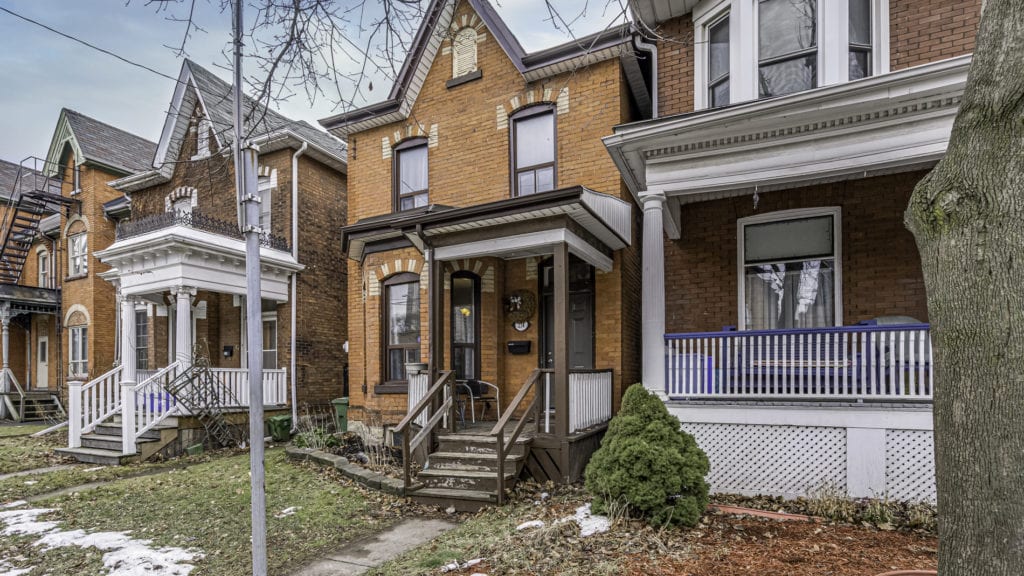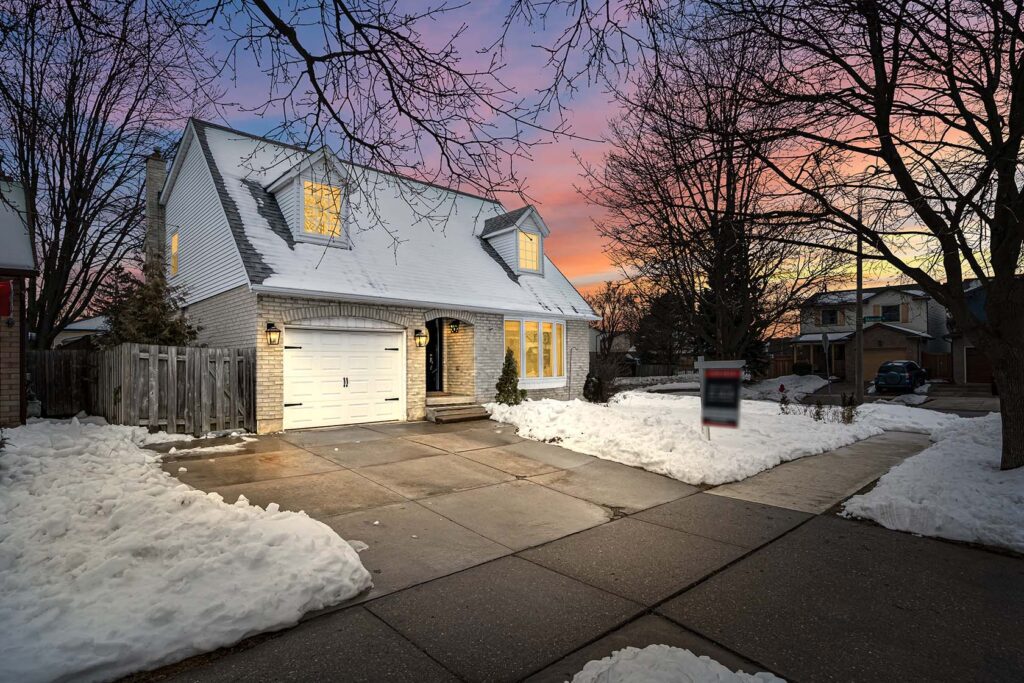
The Realtors® Association of Hamilton-Burlington (RAHB) reported 540 sales in January 2023, this is down 25.6% over last year. There were 1,116 new listings last month, up 27.3% and inventory was up a significant 284.6% with 1,577 active listings on the market.
The average price for a residential home in Hamilton-Burlington was also down year-over-year. The average price in the region was $791,551–down 25.1% over 2022.
Bank of Canada interest rates and prices have impacted affordability in the market, allowing for some wiggle room for the supply levels to inch back up to pre-pandemic levels. However, as the Bank of Canada recently announced it would be pausing further hikes to see the impact on our economy, it will likely limit further price adjustments.
Have you signed up for our weekly newsletter? Get The St. Jean Report delivered right to your inbox and stay ahead of market trends and news. Subscribe here.
Let’s take a closer look at what happened in the local real estate market last month:
Hamilton Market Activity
| Variable | 2023 | Difference |
|---|---|---|
| Sales Activity | 349 | -21.2% |
| New Listings | 666 | 23.3 |
| Active Listings | 933 | 280.8% |
| Months of Inventory | 2.7 | 383.4% |
| Average Price | $750,529 | -22.3% |
| Median Price | $719,000 | -19.2% |
| Average Days on Market | 37.8 | 189.1% |
Burlington Market Activity
| Variable | 2022 | Difference |
|---|---|---|
| Sales Activity | 111 | -27.9% |
| New Listings | 239 | 25.8% |
| Active Listings | 278 | 297.1% |
| Months of Inventory | 2.5 | 451.0% |
| Average Price | $916,121 | -33.6% |
| Median Price | $760,000 | -37.8% |
| Average Days on Market | 30.4 | 237.8% |
We keep a close eye on the local real estate market. You can read our past Hamilton-Burlington real estate market report updates right here.
Sales Activity
Sales in Hamilton were down 21.2% year-over-year with 349 sales reported through the MLS®. Burlington saw 111 sales last month, down 27.9% over January 2022.
New Listings
Although sales were down, new listings in both regions were up. Hamilton had 666 new listings reported, an increase of 23.3% over January 2022. Burlington has 239 new listings, which was up 25.8% over last year.
Active Listings
With more new listings and reduced sales activity, we are seeing active listings in the RAHB area. Also known as “inventory,” there were 933 active listings in Hamilton last month, an increase of 280.8%. Active listings in Burlington were up 297.1% over 2022 with 278 active listings in January 2023 reported.
Months of Inventory
Months of supply sometimes referred to as months of inventory is typically used to measure market conditions. This figure estimates how long it would take to sell off the entire inventory of homes supposing no new listings enter the market. In Hamilton, months of inventory is up 383.4% over last year sitting at 2.7 months. Burlington months of inventory is at 2.5, which is up 451% over last year. Most experts agree that months o inventory ranging around the 3-month mark could be considered a traditional “buyer’s market” while anything below 2 would be more like a “seller’s market.”
Thinking about buying a home in Hamilton or the surrounding area soon? Learn more about the real estate closing process here.
Average Days on Market
Average days on market (ADOM) is also up in both cities. In Hamilton, we are seeing 37.8 days on market–up 189.1% over last year. ADOM in Burlington is at 30.4, which is 237.8% higher than in January 2022. Sellers can expect their homes to stay on the market for longer than they would have seen at the peak of the market last year.
Average Prices
Average prices in the area remain steady month-over-month but have been decreasing year-over-year. For example, the average residential price in Hamilton was $750,529 in January 2023, down 22.3% over the previous year. Burlington average prices were $916,121, which is down 33.6% over January 2022.
In the News
According to The Globe and Mail, the Toronto Regional Real Estate Board (TRREB) is reporting a market deceleration in January. Home prices flattened, and sales were slow. The Home Price Index–the method of price reporting that excludes the highest valued properties–was at $1,078,900 in Toronto last month, essentially equal to December’s numbers, but down 19% compared to the peak of the market in March 2022.
While the Bank of Canada was the first Group of Seven central bankers to adopt a strategy of outsize interest rate increases, the bank has recently said it expects to hold its current lending rate of 4.5% to see how the Canadian economy is impacted. Bloomberg reports that Governor Tiff Macklem says they know that it takes time for higher interest rates to work through the economy and reduce inflation.
With the Bank of Canada’s lending rate at 4.5%, the highest since 2007, The Globe and Mail is reporting that many economists are predicting rate cuts later in the year. While the Bank of Canada has not ruled out further rate hikes to battle inflation, however, as bond yields continue to drop, some believe this could signal the central bank to ease its tightening phase. Market predictions are not a certainty, however, we are seeing an improvement in inflation, with supply chain improvements, dropping oil prices, and more.
Canada’s banking regulator, the Office of the Superintendent of Financial Institutions (OFSI) is considering tightening the rules for mortgage lending. A new article in The Spec reports on a consultation with three proposals aimed at ensuring borrowers have the funds to cover the debt they are taking on. This could restrict banks from lending to borrowers considered “on the margins.” The consultation is open until April 14 and if approved would only go into effect later in the year, but many brokers are predicting a slight panic in the market to purchase before new rules take effect.
Not sure what type of mortgage is right for you? Read our Mortgage 101 blog right here.
A Look at What’s to Come
Last year’s interest hikes did their job of cooling the red-hot real estate market. Today, we are seeing similar housing inventory to what was seen before the pandemic. With more new listings hitting the market, buyers have more options. However, interest rates also impacted affordability in many areas. Prices are down from the peak of the market, but still significantly higher than what we saw pre-pandemic.
In many areas, benchmark prices are stabilizing since December, and in some cases increasing. With potential new mortgage rules coming into play, many buyers will want to act fast to buy and enter the market. Sellers would be wise to capitalize on what will likely be a busy Spring Market.
Both buyers and sellers would benefit from working with an experienced real estate agent who understands local nuances and market shifts.
Are you thinking about making a real estate move in the near future? Call us at 1-844-484-SOLD or email us here for everything you need to know about buying and selling in this market.



